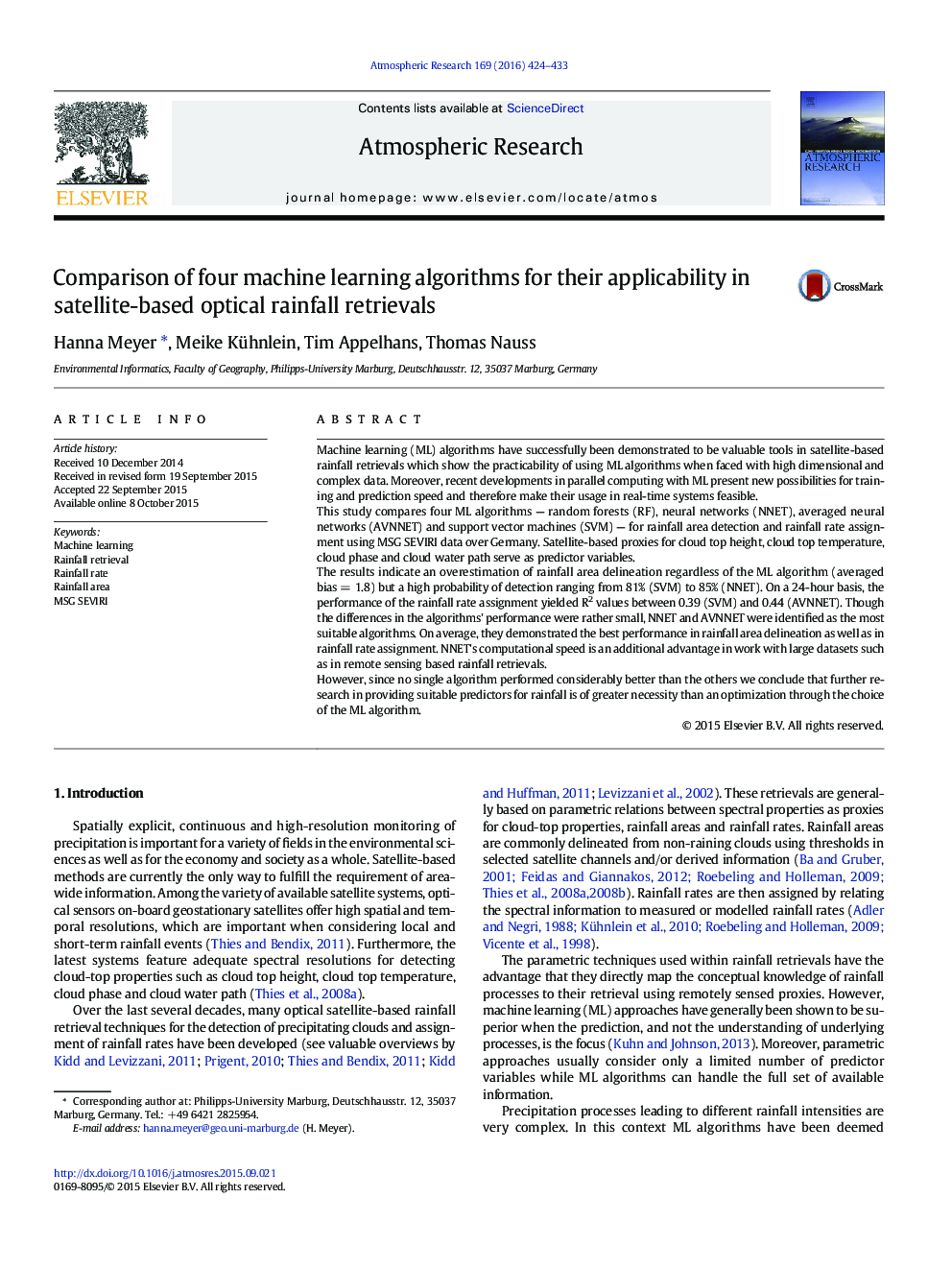| Article ID | Journal | Published Year | Pages | File Type |
|---|---|---|---|---|
| 4449616 | Atmospheric Research | 2016 | 10 Pages |
•We compared four machine learning algorithms for optical rainfall retrievals.•We found only small differences in the performance of the algorithms.•Neural networks and averaged neural networks performed best.•Neural networks further had low computation times thus we rate it as most suitable.
Machine learning (ML) algorithms have successfully been demonstrated to be valuable tools in satellite-based rainfall retrievals which show the practicability of using ML algorithms when faced with high dimensional and complex data. Moreover, recent developments in parallel computing with ML present new possibilities for training and prediction speed and therefore make their usage in real-time systems feasible.This study compares four ML algorithms — random forests (RF), neural networks (NNET), averaged neural networks (AVNNET) and support vector machines (SVM) — for rainfall area detection and rainfall rate assignment using MSG SEVIRI data over Germany. Satellite-based proxies for cloud top height, cloud top temperature, cloud phase and cloud water path serve as predictor variables.The results indicate an overestimation of rainfall area delineation regardless of the ML algorithm (averaged bias = 1.8) but a high probability of detection ranging from 81% (SVM) to 85% (NNET). On a 24-hour basis, the performance of the rainfall rate assignment yielded R2 values between 0.39 (SVM) and 0.44 (AVNNET). Though the differences in the algorithms' performance were rather small, NNET and AVNNET were identified as the most suitable algorithms. On average, they demonstrated the best performance in rainfall area delineation as well as in rainfall rate assignment. NNET's computational speed is an additional advantage in work with large datasets such as in remote sensing based rainfall retrievals.However, since no single algorithm performed considerably better than the others we conclude that further research in providing suitable predictors for rainfall is of greater necessity than an optimization through the choice of the ML algorithm.
